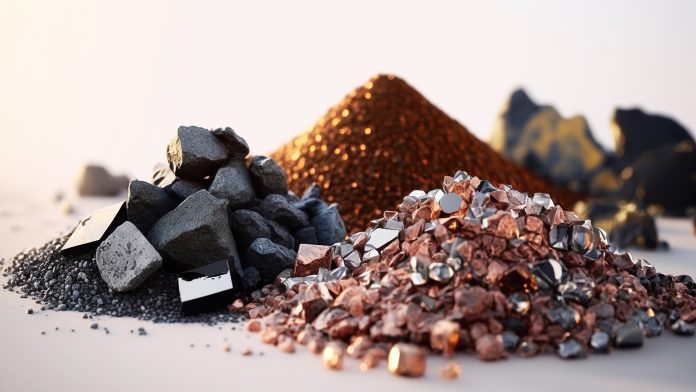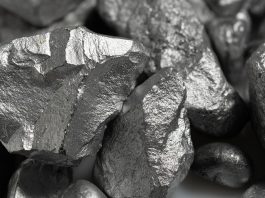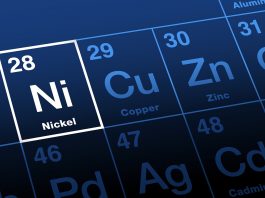Olimpia Pilch, Co-Founder and Senior Advisor of the Critical Minerals Association Australia, considers the outlook for Australian critical minerals, navigation of turbulent markets, crucial policy changes, and international significance.
In 2023, Western governments turned to penning strategies, signing agreements and banding together through the Minerals Security Partnership (MSP) – of which Australia is a member – and funding projects across MSP and allied nations. Notably, Australia and the UK signed a statement of intent to support the critical minerals sector, as well as one with Germany; they courted the US and inked the Compact aimed at enhancing bilateral co-operation; shook hands with France over a bilateral agreement on critical minerals; celebrated a milestone in the critical minerals investment partnership with India; and Australia’s Prime Minister Anthony Albanese visited China’s President Xi Jinping in an effort to calm down the turbulent relationship at a time when tensions over critical minerals (especially gallium, germanium, graphite, and rare earths) had been escalating as US and China continue a tit-for-tat.
For Australia, like many Western nations, China is its biggest trading partner (accounting for 34% of exports), and if prompted, could cause chaos for Australia’s resources sector and, as a result, the economy (with exports of predominantly iron ore, bauxite, gold, coal, and lithium – generating a record AU$455bn in export revenue in the 2022-23 financial year). Maintaining traditional trade relations and the search for new partners has dominated Australia’s strategy on the global stage as a ‘dig-and-ship’ nation that has not yet capitalised on sovereign value-added processing and refining, which remains in the tight grip of China.
Turbulent markets
While the Australian Government embarked on a quest for new friends, the industry faced an existential problem. The optimism of analysts projecting astronomical shortfalls between demand for critical minerals and green technologies and supply was not shared by equity markets in 2023.
Key issues remained: the technologies were not being built at the rate expected, China’s economy was showing signs of a slow-down, and Chinese consumers began falling out of love with electric vehicles (Tesla’s sales alone dropped 17.8% in November 2023 – some attributing this to the China’s phase-out of US$28 billion worth of incentives over 2009-2022).
Investors had little appetite for backing pre-feasibility exploration projects that would not stack up economically with a downturn in prices. And the sharp downturn came, fuelled by China’s overcapacity and economic slowdown, claiming not only the cash-strapped juniors but also high-cost casualties including – the legendary Mt Isa, Core Lithium’s Grants mine, and Wyloo Metal’s Kambalda – with lithium returns at -81.43%, nickel at -45.21%, and platinum at -7.67% for the year 2023. For better or worse, Australia’s resources sector is paying the price for decisionsmade in Beijing. Troubles in China spell troubles for down under.
Late-stage critical minerals projects, however – particularly 15 rare earth projects with a proposed investment of $7.3bn – have enjoyed a surge in investment. The Albanese Government also stepped in with an AU$2bn expansion in critical minerals financing aimed at doubling the Critical Minerals Facility’s capacity to finance Australian critical minerals mining and processing projects.
The story in lithium also continued, with total committed investments increasing by $2.5bn despite the rocky equity markets. However, the spending was committed to either expansions or the bigger end of town rather than junior explorers and their new finds. The increase from $6.7bn in 2022 to $11.8bn in 2023 in the value of committed critical minerals projects, confirms Federal Minister for Resources and Northern Australia Madeleine King’s statement that “the road to net zero runs through Australia’s resources sector” and the world remains hungry for Australia’s resources. However, Australia’s export revenues depend on more than three lithium projects, reaffirming the need for a robust critical minerals strategy.
Critical Minerals Strategy 2023-2030
Australia’s Critical Minerals Strategy 2023-2030 focuses on re-positioning the nation as a globally significant producer of raw and processed critical minerals. The strategy aims to incubate the fledgling sector to take advantage of geostrategic and economic benefits associated with resources needed for the energy transition. To successfully move further up the value chain and reap the additional benefits of Australia’s natural endowment, the government will need to focus on creating an enabling business environment that promotes innovation and commercialisation within the midstream processing and refining space.
The Strategy also focuses on critical minerals’ biggest challenge – financing–specifically that of strategic projects in the midstream. The government aims to support the industry through ‘well-designed support’ to help de-risk projects and attract private investment to projects deemed important to Australia’s goals.
So far, the Australian Government has awarded A$100m to projects – a drop in the ocean when it comes to building modern and ‘green’ refining facilities that can easily run into the billions. However, the National Reconstruction Fund has AU$1bn earmarked for ‘value-add in resources’. Another AU$50.5m has been committed to establishing the Australian Critical Minerals Research and Development Hub to begin tackling technological challenges that Chinese companies have built expertise in and Australia is found lacking in.
On the partnership side, diversification and partnerships with like-minded nations (government speak for non-China, Russia, North Korea, or Iran) are highlighted as the Australian Government continues to court potential buyers for its critical minerals. Australia is also committing more resources to monitor whether competitors are investing in the nation’s critical minerals sector, with AU$2.2m to be spent over four years by the Treasury to ‘develop more sophisticated ways of tracking foreign investment patterns.’ This comes as no surprise after the Government blocked a takeover of a lithium miner by a China-linked company. Greater protectionism of Australian sovereignty is likely to ruffle some investors’ feathers, particularly those who have enjoyed decades of quick profits.

On the environmental, social, and governance (ESG) front, there’s still some debate as to whether Australia is a ‘world leader.’ While it may indeed be the case for Australia in terms of political stability and absence of violence and terrorism; government effectiveness, regulatory quality, and accountability; the rule of law and control of corruption; the critical minerals sector – especially at the project level – has some issues that limit the nation’s ability to claim that title, particularly in indigenous matters and corporate governance. That being said, there are plenty of outstanding projects demonstrating exemplary ESG practices. The Australian Government is also cooperating with international standards bodies and encouraging discussions between the sector and First Nations people under the banner of ‘benefit sharing.’
Not meeting in the middle
The strategic role of the midstream cannot be stressed enough. Currently, China monopolises the midstream space globally for many critical minerals – such as gallium, lithium, graphite, and manganese – by Indonesia for nickel, Brazil for niobium, and the US for beryllium. Although many nations have a variety of resources that can be extracted, it is the processing and refining that ultimately add value and influence both the upstream prices and downstream access to critical materials. Moving from a ‘dig and ship model’ is no simple task. The successful creation of an Australian – specifically Australian-owned- midstream industry – will depend on the presence of the following five must-have ingredients:
- Access to finance deployed at speed (non-traditional – grants, low-interest loans, sovereign guarantees, and underwriting);
- Access to low-cost, ‘clean’ energy sources;
- Access to modern infrastructure (that a company does not have to invest in first) such as deep water ports, rail, roads, etc;
- Industry-orientated innovation and technological developments and;
- Expert know-how and a highly skilled talent pipeline.
Given the geopolitical influences on critical minerals value chains and lack of a clear offtake route, private investors are more likely to back Chinese joint ventures or projects with significant Chinese backing, leaving critical minerals projects that are aiming to reposition themselves for the Western market at a disadvantage. This is not surprising as the majority of the demand is in China. Backing a project that is destined for either an unknown or weak market is a risky game, and investors want to both speed up and increase their returns while the demand projections look promising.
Investors are in the business of making money, not securing Australia’s geostrategic ambitions or sovereignty; the latter two fall within the government’s remit. However, long-term diversification and economic growth require greater public-private partnerships to compete effectively against other nations’ state-controlled competition. Industry needs to contribute expertise and business know-how, and the government must provide some form of counterbalance to international market distortions and geopolitical fallouts.
The difficulty lies in striking a balance to avoid moving too far away from free-market values.
However, the market and government are at odds, with some investors calling for less government meddling and greater freedom to cut deals with whomever they want. However, as demonstrated by China, Indonesia, and the US, critical minerals markets and state intervention are unlikely to decouple anytime soon. It is also unlikely that many investors and shareholders will have free license to sell strategic assets to foreign entities of concern without some government intervention.
It is worth noting that contrary to free-market ideology, leaving the creation of an Australian midstream to the markets will either perpetuate Australia’s current ‘dig and ship model’ or attract competitors willing to accept lower profits for greater market share or even a monopoly. Australian companies venturing further down the value chain face limited options to tap into an alternative downstream market to sell their products, restricted access to alternative capital sources (securing of which typically takes significantly longer than Chinese investment), and technological barriers, including know-how and access to equipment. Naturally, China is unlikely to support the growth of alternative midstream industries and has already restricted the exports of rare earth processing technology.
Most significantly, Australia, like other nations, cannot compete with China on cost. Instead, technological development and innovation can support ‘economies of flexibility’ focusing on modular plants and processes that can service multiple commodities based on the flow of input material. This would require either co-operation between numerous producers or vertical integration. The location of processing plants and refineries within industrial hubs or clusters can, if strategically planned, create ecosystems of waste-to-reagent use between multiple co-located plants through the adoption of circular economy principles, leading to reductions in cost over time.
Stiff international competition
China is not the only worry facing Australia’s critical minerals sector. Domestic issues also stand in the way: Restrictive bureaucracy, changes to industrial policy (e.g. same job, same pay), the inability to streamline planning and permitting across all its States, and a lack of early investment in key supporting infrastructure. These are leaving Australian operations increasingly too expensive for the China-controlled markets, where cheaper alternatives are arising across the global south. African and Latin American jurisdictions increasingly use finance from China, India, Saudi Arabia, and the US. Not only can projects in some global south nations reach production much quicker, but they also come with significantly lower costs and better profit margins.
That said, the good news is that the stability and reliance of Australia’s established systems position it favourably on the global stage. In its 2022 survey, the Fraser Institute ranked Western Australia and South Australia as second and sixth, respectively, for investment attractiveness globally, while South Australia also ranked third for policy perception.
Australia also maintains an advantage when it comes to courting carmakers and other OEMs – a reputation for responsible practices. Increasingly, as the carbon craze demands lower footprints, and automakers are terrified of protests against poor mining practices, doing things ‘the right way’ carries certain benefits.
Yet, globally, price remains king – and so do returns on investment. As Australia’s top diplomats focus on being the key supplier for the world’s energy transition, the balancing act of maintaining a competitive critical minerals sector without sacrificing responsibility while bridging the gap between its free-market ideals and the monopolistic stranglehold of its largest trading partner will be Australia’s most significant challenge.
Please note, this article will also appear in the seventeenth edition of our quarterly publication.









